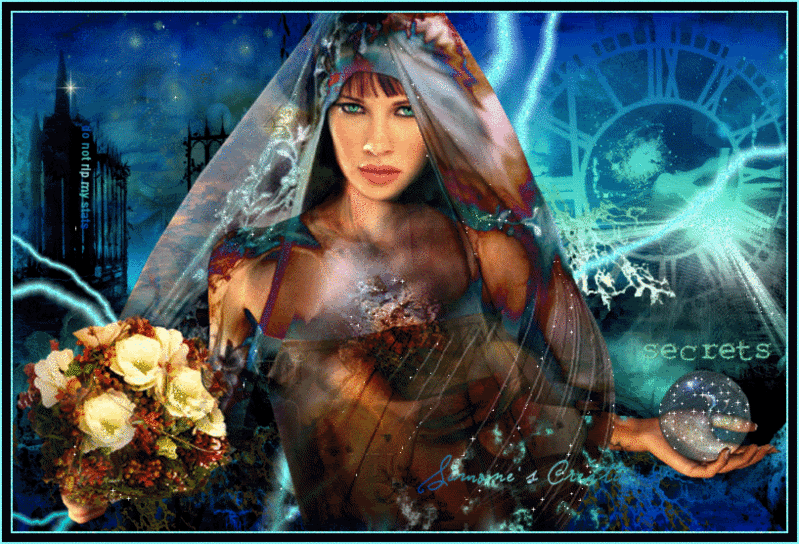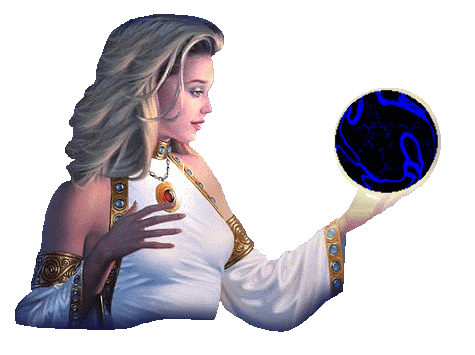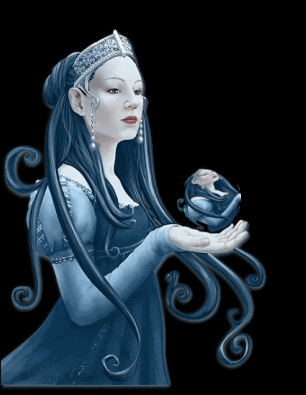|

"Intuition is the very force or activity of the soul in its experience through whatever has been the experience of the soul itself."
~Henry Reed~


The idea that humans survive physical death, that some part of the human being is immortal, profoundly affects the lives of those who harbor such a belief. While Christianity, Islam, Judaism, and many other religions promise their followers some form of a life after death, many thousands of men and women feel that they have proof of a life beyond the grave based on the evidence of survival that manifests through spirit mediums.
Some psychical researchers maintain that the principal difference between a psychic-sensitive and a trance medium is that the psychic attributes his or her talents to some manifestations of extrasensory ability, such as clairvoyance, precognition, or telepathy, whereas the medium credits his or her abilities to the interaction with spirits.
Mediums most often relay messages from the other side through the agency of a spirit control or spirit guide, an entity who claims to have lived on Earth and acquired certain skills, knowledge, and wisdom before its own physical death. The concept of a spirit guide dates back to antiquity, and serious scholars and researchers have been asking the same question for hundreds of years: Is this alleged entity, who claims to speak through the medium, really a spirit, or is it the voice of the medium's subconscious?

Some mediums would probably concede that the action of the subjective mind is not entirely eliminated during trance and the arrival of the spirit control, but from their viewpoint their subconscious is taken over by the guide. An aspect of mediumistic phenomena on which both psychical researchers and mediums will be likely to agree is that there is an intelligence that directs and controls them. Another area of agreement would probably be that this intelligence is a human intelligence. Once again, the area of dispute would be whether that human intelligence issues from the living or from the dead. Interestingly, spirit communication still requires both a soul and a body—the soul of an alleged deceased human personality and the physical body of the medium.
In the 1970s, after the publication of Jane Roberts's (1929–1984) books The Seth Material and Seth Speaks, "channeling" became a more popular name for mediumship, and it remains so to the present day. Jane Roberts received contact with an entity named Seth after undergoing a trance state while Robert Butts, her husband, recorded the thought, ideas, and concepts communicated by the spirit in notebooks. The material dictated by Seth was literate and provocative, and especially well-suited to a generation of maturing sixties' flower children and baby boomers. It wasn't long before Seth discussion groups around the United States were celebrating such concepts as the following: 1) We all create our own reality; 2) Our point of power lies in the present; and 3) We are all gods couched in "creaturehood." Nor was it long before "channelers" were emerging in large numbers throughout the country, and individuals such as Jach Pursel, Kevin Ryerson (1953– ), and J. Z. Knight (1946– ) had attained national and international celebrity status.
Perhaps in the mind of the channelers, the designation of "mediums" conjured up images of the traditional darkened seance parlors and ectoplasmic spirit guides, imagery that had become unacceptable to the modern spirit communicator, who more often relays messages from guides and master teachers in the full light of a platform setting or a television studio and seldom claims to materialize anything other than an engaging performance for the assembled audience. Then, too, just as in the 1930s when mediums were often compared to radio receiving sets for transmissions from the spirit world, it likely occurred to someone that the contemporary medium might be thought of as being similar to a human television channel, receiving thoughts and images from beyond. Whichever title is preferred by those who claim to relay messages from the spirits, the process of communication remains the same: Spirit entities occupy the physical body of the channelers or the mediums and speak through them.

The series Medium is based on Allison DuBois's book entitled "Don't Kiss Them Good-Bye." Patricia Arquette was cast to play the role of Allison DuBois, and won an Emmy for her portrayal. Glen Gordon Caron, creator of Moonlighting and many other hits, is the writer for the series. It's being produced by Paramount pictures and Grammnet, which is owned by Kelsey Grammer.
About Allison DuBois
•Allison DuBois is an Arizona native. She was born on January 24, 1972 in Phoenix, Arizona.
•Allison graduated from Corona del Sol High School in Tempe in 1990.
•While going for her degree, Allison DuBois was also an intern at the District Attorney's office in Phoenix.
•Allison received a B.A. in political science with a minor in history from Arizona State University.
•Allison DuBois spent four years participating in various tests at the University of Arizona to assist them in their studies of mediums and psychic phenomena.
•Just as depicted on the TV show Medium, Allison DuBois' husband is named Joe. He is an aerospace engineer. He recently retired from that career.
•Allison and Joe DuBois have three daughters in real life, as depicted in the Medium TV show.
•Allison became aware of her special talent when she was 6 years old. She believes that her three daughters have inherited her gift.
•Allison DuBois refers to herself as a medium and profiler. She doesn't use the term 'psychic' because of the negative connotation associated with it.
•One variation from the Medium TV show: Allison DuBois says that although some of her visions come to her in dreams, most of them come to her when she's awake.
Although the very idea of establishing contact with great spirit teachers from the beyond or from other dimensions of reality seemed new and exciting to the great masses of men and women in the 1970s, from the viewpoint of those individuals who research such matters it seemed only as though another cycle had once again reached its season and general public interest in spirit contact had returned. It was time again to recognize those sensitive men and women—modern-day shamans, so to speak— who were carrying on the tradition of spirit communication first set in motion in the nineteenth century by such great mediums as Daniel Dunglas Home (1833–1886), Mina "Margery" Crandon (1889–1941), Leonora E. Piper (1857–1950), and Eileen Garrett (1892–1970)—all of whom were quite likely to be completely unknown to the general public and even, perhaps, to the contemporary crop of channelers themselves. In addition to the pioneer work accomplished by such long-forgotten spirit mediums as those named above, the entire New Age Movement of the late twentieth century owes a great debt to the controversial Helena Petrovna Blavatsky (1831–1891), who was the first to popularize "channeling" wisdom from ancient teachers and masters, as well as the mystique of past lives and lost worlds.
In 1987, the ABC television network presented a miniseries based on actress Shirley MacLaine's (1934– ) book Out on a Limb (1987), which dealt with many subjects exciting to New Age enthusiasts, such as reincarnation, extraterrestrial visitation, ancient mysteries, and spirit communication. Perhaps the most captivating segments of the miniseries depicted MacLaine receiving spirit communication through channeler Kevin Ryerson. The actress and the channeler played themselves in the five-hour dramatization on prime-time television, and an international audience of millions were able to see for themselves how Tom McPherson, the 400-year-old spirit of an Irishman, spoke through Ryerson to advise MacLaine. Due to the popularity of Out on a Limb as a book and as a miniseries, channeling became a kind of craze throughout North America. The actress herself conducted a series of seminars in which she openly discussed her beliefs in past lives, UFOs, and spirit communication. Channeling and the claimed accessibility of the world beyond death achieved a peak of popularity which led to an outpouring of television programs, motion pictures, books, New Age expos, psychic fairs, and the "birth" of new channelers in a virtual cosmic population explosion. The interest in channelers and after-death communication continues to find its expression in such individuals as Sylvia Browne (1936– ), James Van Praagh (ca. 1960– ), and John Edward.

Even in this day of mass communication, Skylabs, the Internet, and increasingly sophisticated technology people are still fascinated by mediumship, channeling, and contacting the spirit world. According to J. Z. Knight (1946– ), another of Shirley MacLaine's favorite channelers, through her guide, Ramtha, believes the reason for their continued popularity is that there really aren't any mysteries left in humankind's material journey. Millions of people have reached a kind of peak in their evolution. Knight explained: "This has nothing to do with class distinction. Rich and poor, superstars and mediocrity alike feel that there must be more to life than this. The rich ask if there isn't more to life than material things. They also ask, 'Who am I?' 'Why am I doing this?' The poor ask if there isn't more to life than strife and suffering."
Knight says that Ramtha, the 35,000-year-old warrior from Lemuria who speaks through her, calls this point in people's lives the "time of fantastic realism." Ramtha also said that the human journey has reached a point when the self seeks to turn inward to self-examination. "In this age of communication and travel and the media, we have all been brought so close together," Knight said. "There really isn't much left to discover about our binary-thinking world. The next step will have to be that the analogical mind takes things into a different perspective, and we find ourselves in an 'unknown mind,' discovering what the ultimate journey is all about."
sources:
http://www.unexplainedstuff.com/
background and graphics by:




|